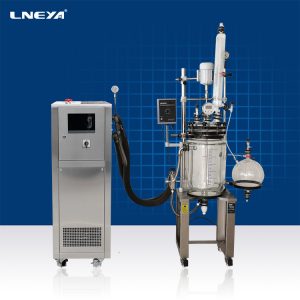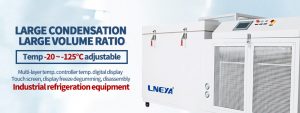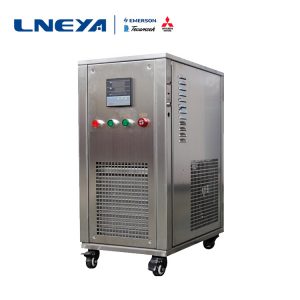Il metodo che il piccolo refrigeratore raffreddato ad acqua deve seguire per la ricarica del refrigerante
In our life, we believe that everyone is very familiar with refrigeration. In the central air conditioning and industrial production process cooling industry, piccolo refrigeratore raffreddato ad acqua is more common. This unit is composed of a compressor in the fuselage, a horizontal shell and tube condenser, an evaporator, a thermal expansion valve, and some related parts. Under the cooperation of these auxiliary parts, the overall small water cooled chiller is compact in structure, convenient in operation and control, and is popular among the public in the market.
For refrigeration systems that do not have a high pressure reservoir and a low pressure vapor-liquid separator, the control of refrigerant charge is particularly important. Because the refrigeration system is a condenser and also acts as a high-pressure reservoir, the refrigerant is stored in the condenser, and the condenser is cooled. The heat dissipation area is reduced and the condensing pressure is increased, resulting in a decrease in cooling capacity.
For the control of the refrigerant charge of such small water cooled chillers, the following methods are followed during the filling process:
First, touch the temperature of the condenser casing.
The upper outlet of the condenser outlet is heated above the outlet, and the outlet below the outlet is cool. (There is a description of the high temperature exhaust of the compressor in the inside. The cooling indicates that the small water-cooled chiller is a liquid space.)
Second, look at the inspiratory pressure.
Corresponding to the temperature of the refrigerant water in the evaporator. (That is, corresponding to the evaporation temperature.)
Third, look at the compressor return pipe temperature.
The high-temperature unit return pipe should be cooled and dew, but it can be dew condensation to the compressor return valve; the low-temperature unit return pipe should be frosted, but the frost can be connected to the compressor return valve. If condensation or frost builds up on the compressor casing, liquid refrigerant will enter the crankcase, causing the compressor to run back and cause liquid problem.
Raccomandazioni correlate
-
Effetto del sistema di raffreddamento e riscaldamento sul reattore in vetro
1704The glass reactor is compact in volume and clear in structure, and can be conveniently operated in series and parallel in a flexible manner, fully satisfying various process occasions; the reaction path does not have any metal contact, and the inl...
Visualizza dettagli -
Ultra-high temperature material cold and hot impact box refrigeration oil
1859The ultra-high temperature material impact test chamber test device has too much frozen oil in the evaporator, which can also cause insufficient cooling and cause slow cooling. The oil stored in the evaporator of the ultra-high temperature materia...
Visualizza dettagli -
Uso di frigoriferi per il trattamento a freddo di parti meccaniche e confronto con l'azoto liquido
1496In the machinery manufacturing industry, the quality requirements for parts are very strict. In order to better improve the performance of machinery, improve product quality and life, a new technology-cryogenic treatment has been produced. During ...
Visualizza dettagli -
Quali sono i problemi comuni di debug nei bagni di refrigerazione a bassa temperatura?
2151Quando il bagno di raffreddamento a bassa temperatura è in fase di debug, se l'effetto di raffreddamento locale non è buono, il sistema può essere bloccato da corpi estranei o il design del sistema è irragionevole e non può essere regolato normalmente. A questo punto, LNEYA rimuove i corpi estranei...
Visualizza dettagli
 Refrigeratori industriali LNEYA Produttore Fornitore
Refrigeratori industriali LNEYA Produttore Fornitore














